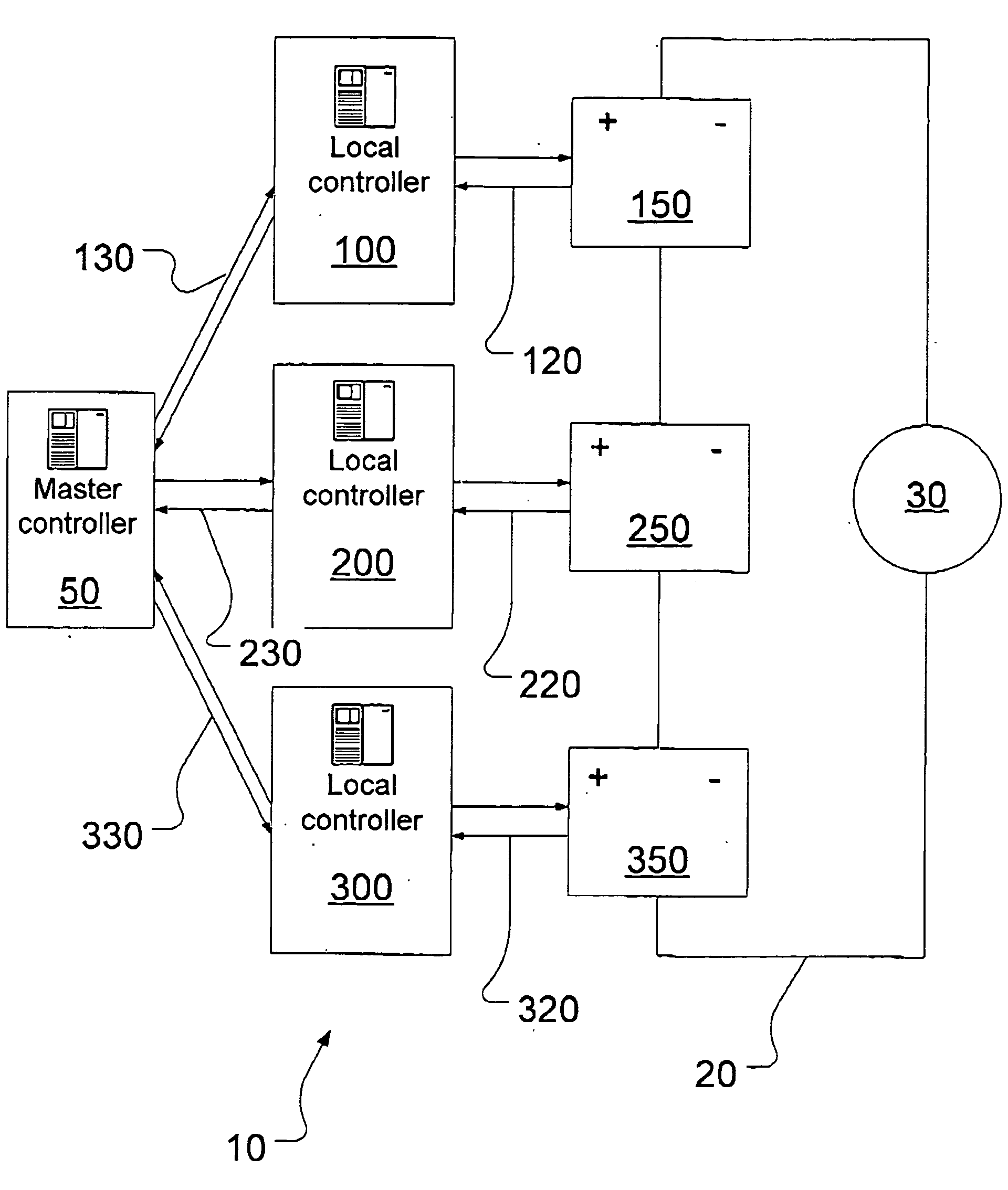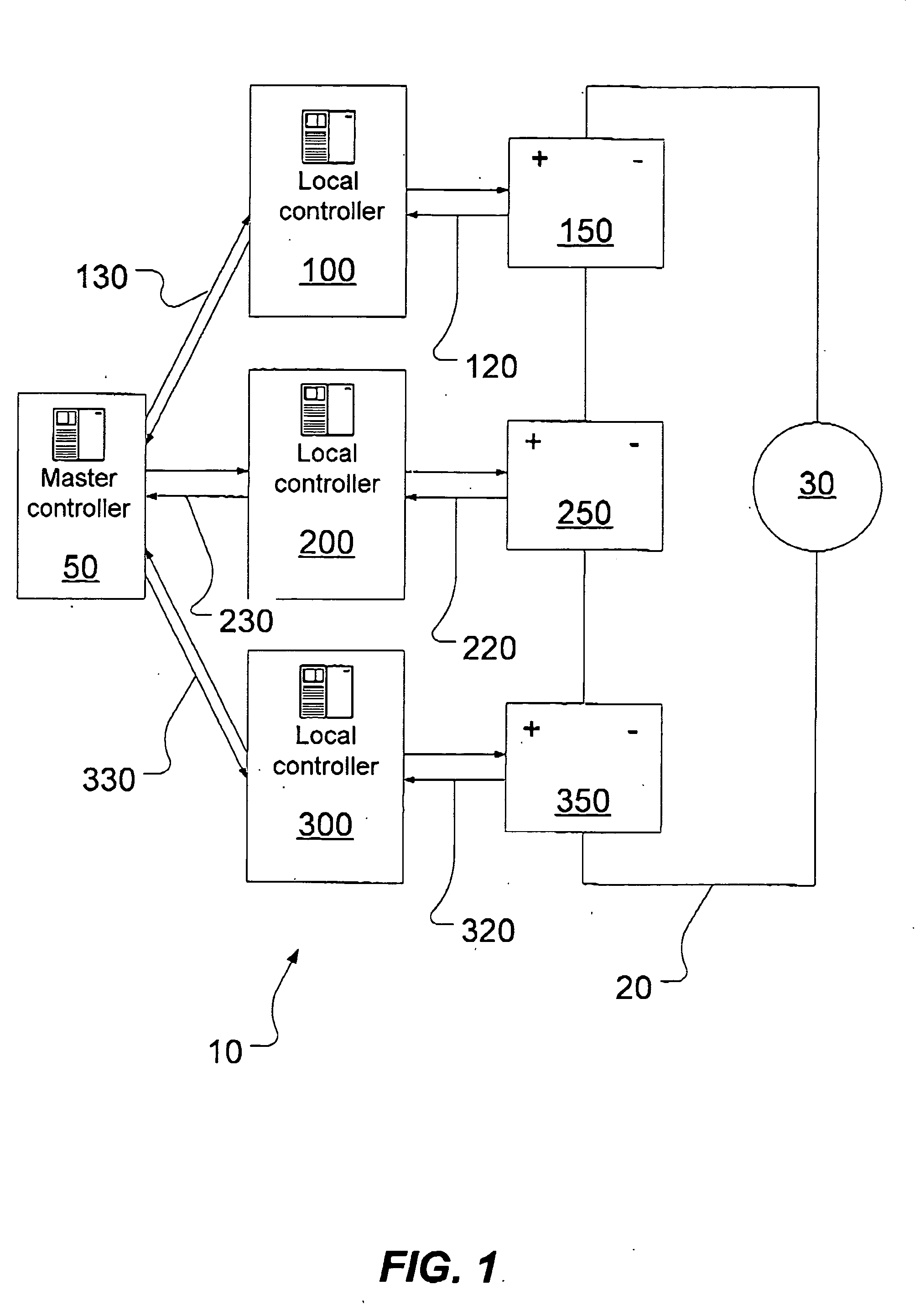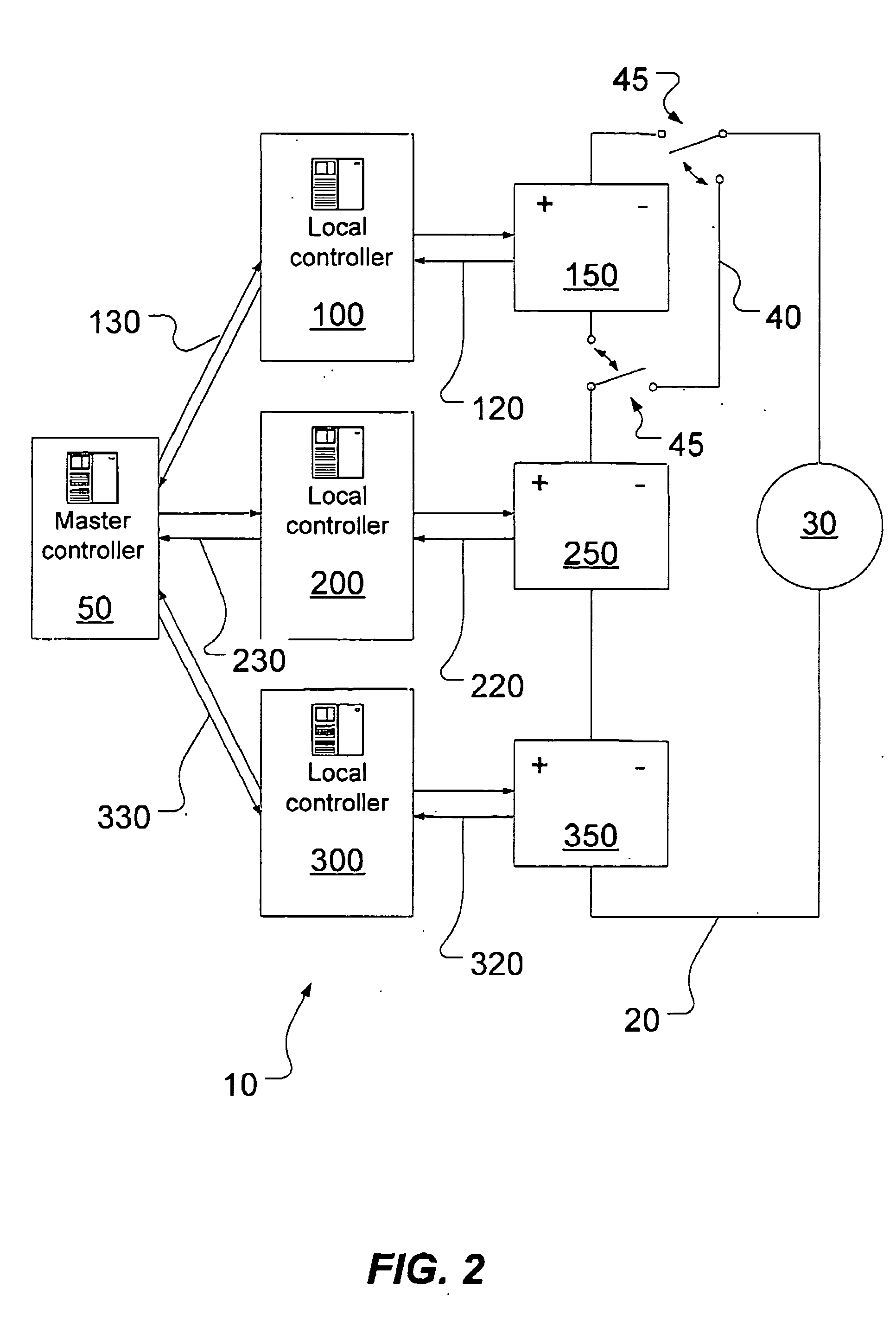Fuel cell power system having multiple fuel cell modules
a fuel cell power system and fuel cell technology, applied in the direction of cell components, final product manufacturing, sustainable manufacturing/processing, etc., can solve the problems of insufficient single fuel cell stack, inability to scale up or down, and difficulty in ensuring that the fuel cell stack will operate efficiently under all the possible operating conditions
- Summary
- Abstract
- Description
- Claims
- Application Information
AI Technical Summary
Benefits of technology
Problems solved by technology
Method used
Image
Examples
first embodiment
[0023]FIG. 1 shows a schematic of a fuel cell power system, generally designated by reference numeral 10, in accordance with the present invention.
[0024] The fuel cell power system 10 includes multiple fuel cell power modules each having a fuel cell and associated peripheral devices for supplying reactants to the fuel cell and for collecting current and reaction byproducts from the fuel cell. FIG. 1 shows a fuel cell power system having three such power modules 150, 250, 350 although it is to be expressly understood that the term “multiple” (or “a plurality of”) should be construed as meaning more than one. In other words, the fuel cell power system 10 according to the present invention has at least two fuel cell power modules. For example, a fuel cell power system used to power a vehicle such as a car (typically requiring about 80-100 kW of power) could use 4 or 5 modules each having a power output of 20 kw. Alternatively, a smaller (or larger) number of modules each having a highe...
second embodiment
[0037] As shown in FIG. 2, a fuel cell power system 10 in accordance with the present invention includes a bypass 40 (possibly also known as a bypass line or a bypass circuit). The bypass 40 enables the first fuel cell power module 150 to be bypassed in the event that it malfunctions, fails or is no longer required due to a diminished overall power requirement. The bypass 40 is controlled by the master controller 50 which operates a pair of switches 45 which can be opened to electrically isolate the fuel cell power module 150. Although FIG. 2 only shows a single bypass 40, it should be understood that the fuel cell power system 10 could include a bypass for each fuel cell power module so that any given module can be shut down and bypassed. Control of the bypass 40 can be managed by the master controller 50 based on overall system power requirements and performance or fault data from the local controller. In a variant, the local controller may also retain a certain autonomy to initia...
PUM
| Property | Measurement | Unit |
|---|---|---|
| power | aaaaa | aaaaa |
| power | aaaaa | aaaaa |
| area | aaaaa | aaaaa |
Abstract
Description
Claims
Application Information
 Login to View More
Login to View More - R&D
- Intellectual Property
- Life Sciences
- Materials
- Tech Scout
- Unparalleled Data Quality
- Higher Quality Content
- 60% Fewer Hallucinations
Browse by: Latest US Patents, China's latest patents, Technical Efficacy Thesaurus, Application Domain, Technology Topic, Popular Technical Reports.
© 2025 PatSnap. All rights reserved.Legal|Privacy policy|Modern Slavery Act Transparency Statement|Sitemap|About US| Contact US: help@patsnap.com



